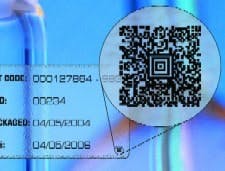Sherwood Technology’s DataLaseâ¢, the new generation colour change technique for an infinite range of solutions, is being used in the fight against counterfeiting. DataLaseTM and DataLase ClearTM can be used for brand protection and security applications by providing products with their own unique mark. Combining chemistry and substrate conversion, this groundbreaking technology’s colour change mechanism can be triggered by low power CO2 laser light energy.Anti-counterfeiting is a growth market, the objective being to identify luxury or high-value products in a way that minimises their fraudulent reproducibility. DataLase allows products to be tagged permanently and discreetly, without the mark being removable.DataLase technology can be used for a range of covert and overt security applications. For example, DataLase has the ability to overtly mark a product with its own distinctive âfingerprint’. This âfingerprint’, such as a tiny 2D Datamatrix code is formed through films, such as polypropylene and polyethylene, allowing it to be permanently embedded or ’sandwiched’ in laminates. The DataLase chemistry is incorporated at the manufacturing stage and can be subsequently laser-marked. It is a particularly effective tool in preventing counterfeiters and grey market trading as the âfingerprint’ can not be easily reproduced or removed.DataLase Clearenables the covert checking of a product’s authenticity. This unique product allows images to be transferred onto transparent media via a laser without interfering with the translucency of the underlying substrate. Counterfeiters are unable to spot the presence of the laser responsive DataLase Clear material as it only becomes visible when exposed to energy from a low power CO2 laser. The DataLase Clear image remains undetectable up to the very point where authenticity needs to be verified, a unique feature not possible with other techniques.The DataLase technology security applications will be available as a result of new and existing application licensing agreements and strategic partnerships with security substrate manufacturers.
